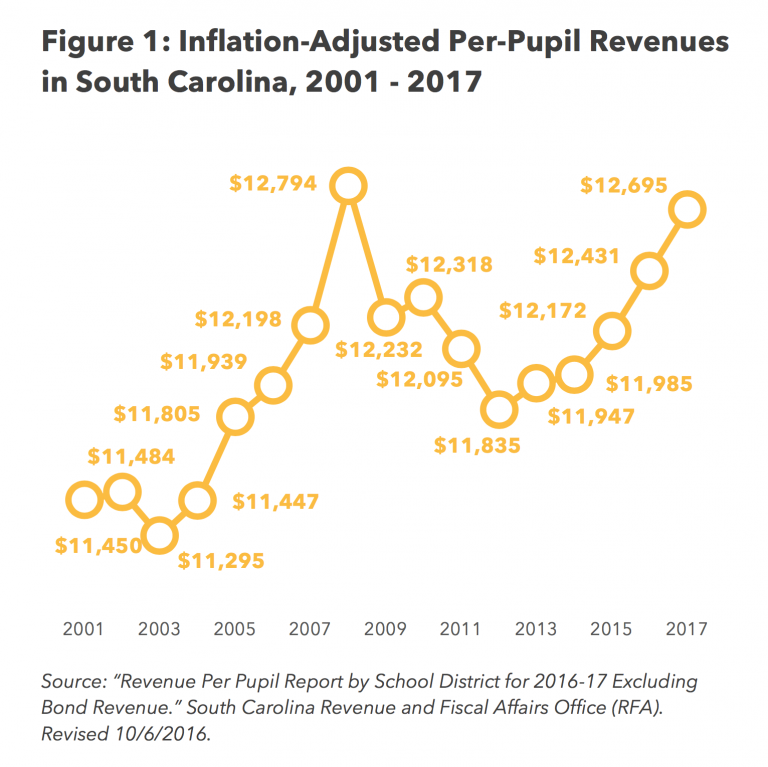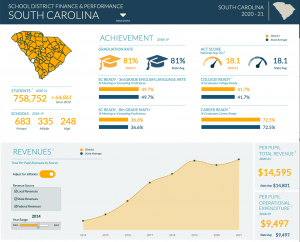Funding Our Children For Success

Over the forty years since the passage of the Education Finance Act (1977), South Carolina’s K-12 education financing has evolved in a piecemeal fashion to become a complex spider web of funding. Since 2001, per pupil expenditures have grown faster than inflation, while student achievement has faltered. A new model that focuses on students instead of programs is necessary to ensure a stable, equitable system.
Fractured Formula
The 2014 South Carolina Supreme Court decision in Abbeville County School District, et al. v. The State of South Carolina found the state’s “educational funding scheme is a fractured formula denying students… the constitutionally required opportunity” to education. This fractured formula fails students for several reasons:
- Expenditures are not directly tied to actual student costs.
- Revenue Streams are unstable and unpredictable, causing significant year- over-year variation in funding.
- Overly-complex funding formulas preclude transparency and disguise inefficiency.
- The state/local cost-sharing formula does not effectively promote equity across districts.
Funding For Success
Our recommended K-12 Finance Model is a ‘back-to-basics’ model that embodies the essential elements of a stable, transparent and equitable system. It contains three basic components.
- Foundation Aid The “foundation” amount required to educate a single typical student.
- Exceptional Student Weighting Factors The additional funding amount required to educate students with exceptional needs, including poverty, limited English proficiency, gifted, vocational and special needs.
- State/Local Cost Sharing The formula requires each local district to levy a state-defined minimum millage rate such that, on average, local districts contribute 1/3 and the state contributes 2/3 of K-12 funds. The myriad of current state funding streams would be merged and distributed based on formula from a single source, guaranteeing transparent, predictable appropriations every year.
Implementation
Re-inventing the K-12 education funding formula is a significant effort which will require a shift in the finance and accounting methods for both the state and local districts.
- Require a phase-in period of 5 to 8 years smooth transition with clear, predictable estimates of budget changes.
- Districts that stand to lose state funding will be held harmless (provided funds to make up for the losses) during phase-in.
- Require annual review of data to optimize, prevent formula from becoming obsolete, and ensure appropriate use of funds.






